- Administrator
- Albums and Singles
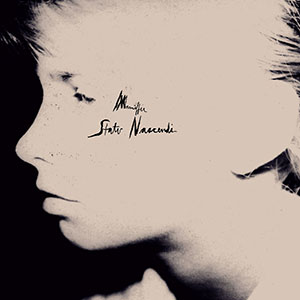 This may be the first album from partners in music (and life) Faith Coloccia and Aaron Turner since 2011, but the two have been anything but stagnant in those past few years. Collaborations with other artists as Mamiffer and side projects abound between these two restless artists, and the duo are even hesitant to consider this the proper third album. Regardless of how it officially stands in their overall canon, Statu Nascendi is a powerful work that strips the Mamiffer sound down to its organic core.
This may be the first album from partners in music (and life) Faith Coloccia and Aaron Turner since 2011, but the two have been anything but stagnant in those past few years. Collaborations with other artists as Mamiffer and side projects abound between these two restless artists, and the duo are even hesitant to consider this the proper third album. Regardless of how it officially stands in their overall canon, Statu Nascendi is a powerful work that strips the Mamiffer sound down to its organic core.
Previous Mamiffer works have existed in the nebulous space between metal, ambient and noise, but this record has the duo focusing more on moody, spacious styles.Turner’s guitar throughout these four pieces is kept low in the mix, occasionally drifting into dissonance such as on the lengthy "Enantiodromia."Even here, however, it stays under tight control and instead of blasting aggressively it enriches a hazy, shoegaze type drone.Paired with the sounds of an organ, it melds into a beautiful fog.
The first piece, "Caelestis Partus," is the most stand-alone, and one of the more traditional sounding ones in their overall discography.Turner's guitar is pushed deep and isolated in the mix, awash in cavernous reverb.Delicate vocals appear a few minutes in, resulting in an uplifting and more inviting accompaniment to the otherwise bleak and dour guitar sound, which builds to a darker, dramatic conclusion.
The focus of the album is Faith Coloccia's vocals, which are utilized on each piece on the album.Her voice is beautiful, yet somber, and contrasts the darker instrumental passages.Blended tastefully to be the centerpiece without being overwhelming, her voice gives the album a certain English pastoral folk sound.With its hint of medieval madrigals and bleak accompaniment, there is a beautiful yet mildly sinister sensibility throughout the pieces, most overtly on the closing "Flower of the Field."
Coloccia's trademark piano has even been scaled back to emphasize mood over force.It appears heavily on "Mercy," but in a comparably restrained manner than her percussive sound heard on previous Mamiffer records.The piano and vocals remain the focus, however, with guitar being cautiously added to flesh out the piece nicely.
If Coloccia and Turner are considering this to not be the third album proper, but a transitional entry until that is released sometime next year, I am quite curious how the new work will sound.The reductionist approach to Statu Nascendi works extremely well, distilling the essence of the Mamiffer sound down to its most essential elements.If the new album is a new direction entirely or an even more stripped down work, I am sure it will be a brilliant work either way.
samples:
 
Read More
- Administrator
- Albums and Singles
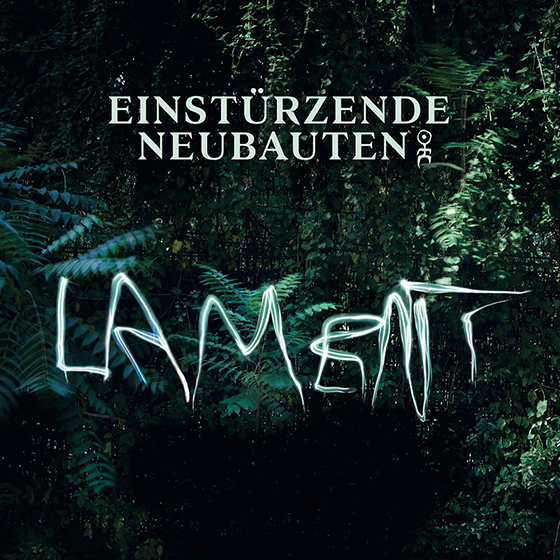 This month, Germany marks two anniversaries of note. The 100th anniversary of the start of the first World War represents one of the darker moments of their history whereas the 25th anniversary of the fall of the Berlin Wall represents a beacon of hope. Einstürzende Neubauten were there for the latter and channel the energy that ran through the divided city of Berlin even still. Through this new project, they connect the dots between the conflicts of today and those of the past while marking the passing of all those who have fallen under the relentless combat and struggle that has plagued mankind since its beginning.
This month, Germany marks two anniversaries of note. The 100th anniversary of the start of the first World War represents one of the darker moments of their history whereas the 25th anniversary of the fall of the Berlin Wall represents a beacon of hope. Einstürzende Neubauten were there for the latter and channel the energy that ran through the divided city of Berlin even still. Through this new project, they connect the dots between the conflicts of today and those of the past while marking the passing of all those who have fallen under the relentless combat and struggle that has plagued mankind since its beginning.
For decades, the majority of art surrounding the first World War centered around the horror and tragedy of the trenches. Poets like Siegfried Sassoon and Wilfred Owen relayed the realities of the front line in verse and novels like Erich Remarque’s All Quiet on the Western Front and Sebastian Faulks’s Birdsong provided chilling insights (either first hand or historical) into the psychology of soldiers on both sides; their fears, hopes and indifference made word. In music, one only has to look at Benjamin Britten’s War Requiem for a haunting elegy to all wars and all the loss contained therein. Yet, in recent years, alternative takes on the first World War have permeated the arts with the Sébastien Japrisot’s Un long dimanche de fiançailles (and Jean-Pierre Jeunet’s film adaptation) showing a more light-hearted and hopeful side to the aftermath of the Great War or Will Self’s fabulous and head-melting Umbrella, a fusion of artillery production, neuropharmacology and modernism.
It is towards Self‚Äôs end of interpretation that Einstürzende Neubauten have taken for their commissioned work Lament. Created for a site-specific performance at the Belgian city of Diksmuide, a city reduced to rubble over the course of heavy fighting during the war. Diksmuide remained a front line for four years, with the Germans and Belgian-French armies locked in a seemingly endless grind of casualties. To give an estimation of its bloodiness, the main trench just outside the city was known as the "Trench of Death" in a war that was meant to end all wars. Blixa Bargeld takes this well-worn phrase and uses it as a springboard for his own historical and artistic investigations. Bargeld maintains that wars never end, war instead just moves and constantly shifts to new locations and conditions. Indeed, it is obvious from perusing the history books that almost all conflicts are intimately related to others, from the large scale of the two World Wars to smaller threads running from civil wars to border disputes. For the instrumental "Kriegsmaschinerie" that opens Lament, Bargeld remains quiet and instead written passages are to be read at certain times during the piece. For the live performances, he holds up large cards with the lines written on them but on the recording we have to make do with the words being printed in the liner notes. Here, Bargeld insists that "War does not break out, and it is never caught or chained; it moves" while a clanging dirge comes as if from the bowels of the earth, bringing to mind classic Neubauten pieces like "Das Schaben" and "Armenia" (indeed "Armenia" being one of a handful of old songs played during the live performances of Lament).
The absurdity of war as being discrete political entities is explored in "Hymnen" and "The Nicky-Willy Telegrams." In the former, the familiar tune of "God Save the King" is played with Neubauten singing a chimera of the various national anthems of the United Kingdom, Canada and Germany – highlighting the common ancestry and living links between these countries at war with each other. On the latter, Bargeld and Alexander Hacke sing the correspondence between Kaisar Wilhelm and Tsar Nicholas, the respective leaders of Germany and Russia along with being first cousins with each other and King George of England. The conversation is sung with a bizarre autotune effect, reflecting the falseness of the sentiments contained in the telegrams (on the face of it, they claim to be looking for ways to avoid war but all the while were moving their armies into position). Between these two pieces, Neubauten show that not only does war never sleep, it does not care if both sides are really same side underneath it all.
Throughout Lament, there is a strong sense of theatre and, as with Neubauten’s theatre work during the nineties, bespoke instrumentation was built by the band to create a visual and metaphorical link between the abstract sounds and the themes. On "In Der Loopgraaf," NU Unruh uses a harp made from barbed wire as a dulcimer-like percussive instrument to accompany Paul van den Broeck’s poem about his inability to dance in the trenches and the looming weight of knowing that the open earth is one long grave for all the men stationed there. Elsewhere, Morse code and amplified crutches are employed and spent artillery shells are used as perscussion instruments. Judging from the photos in the booklet, there is even a replica of one of Luigi Russolo’s intonarumori which was created with replicating the noise of contemporary life in the 1910s (not forgetting that war was one of the chief fascinations of the Italian Futurists, with Russolo serving as a motorcyclist in the Italian army).
The plastic piping used with great effect on Perpetuum Mobile on the "statistical piece of music" "Der 1. Weltkrieg" where the time line of the war is mapped out in music with each country assigned a different pipe (all of different lengths to differentiate them by sound) and each day of the conflict counted by each beat in the song. The days that each country fought are played, resulting in a complex piece which elegantly represents the bare facts about the war: who fought when and for how long. The idea of this being statistical music stretches out into the rest of the album with Neubauten hiring an actual historian to help them research the untold stories and fine details often glossed over in coverage of the war (both historical and artistic). Bargeld has stated in interviews that he wanted to avoid the obvious stories and clichéd sources that are so often used by other artists, by working with a real historian Neubauten have certainly created something unique.
Yet, it would be unfair to think that Neubauten were avoiding the humanity and the emotional weight that goes hand in hand with the topic. The album’s centrepiece is a three movement piece which shares the album’s title. "Lament 1. Lament" is an almost abstract vocal work where the band slowly layer their voices over each other, building a river of sound from which Bargeld launches accusations of the mutual lies and love of power making war (my rough translation!). An instrumental middle movement based on the numbers making up "1918" gives way to the heart-wrenching "Lament 3. Pater Peccavi." Much like Gavin Bryar’s The Sinking of the Titanic, Neubauten combine unbelievably sad music (based on a 16th century motet written by Diksmuide’s own Jacobus Clemens non Papa) with wax cylinder recordings of a linguistics project being performed on prisoners of war. The researchers were interested in the many dialects and languages that existed in Europe at the time, asking them to recite the story of the Prodigal Son in their own language. Here the casualty of culture is laid bare, from the end of the war Europe would become better connected and homogenised with various lingua franca taking hold in each state, erasing dozens of languages from history.
It might be odd to think of a Cold War-era band from Germany being asked to mark the centenary of World War I in Belgium but when you consider Neubauten’s inspirations and the lineage of experimental art in the 20th century, it all stems from the first world war. Walter Benjamin’s art theories required the development of the kind of machinery that lead to wholesale slaughter and the bloody birth of Dada in the middle of the war; both essential forerunners to Neubauten. This runs almost in parallel with Bargeld’s thesis on war never sleeping but moving from place to place; equally the creative arts can be seemingly obliterated or vanish from somewhere, only to pop up in other places and other times when least expected.
 
Read More
- Administrator
- Albums and Singles

Vinyl reissue of Carter's 2008 "standards" album.
"Masque Femine should be regarded as a total work - much like a film, a ballet, a building, or, an altarpiece - rather than as an album of individual songs. And, its fundamental subject should not be understood to be romantic love."
Cut and mastered by Rashad Becker at D&M.
More information is available here.
Read More
- Administrator
- Albums and Singles
Since his first live performances in 2002, Sean McBride, aka Martial Canterel (who also performs as half of the duo Xeno & Oaklander), has crafted his electronic sound in a peculiar intersection between avant-garde and pop. Merging the influences of the first wave of relatively unknown minimal electronic bands in northern Europe, and seminal industrial noise bands such as Throbbing Gristle and SPK, with the smoothly stylish songcraft of early British New Wave, Martial Canterel records and performs using analogue synthesizers, sequencers and drum machines exclusively, molding electricity to fix the action of music creation in substance. The mastery of his composition technique, a second nature of harmonic complexity, along with a unique talent for melodies, enables him to manufacture gems of extreme noise pop, making use of all its unexpected ingredients.
Gyors, Lassù marks an important milestone in the evolution of Martial Canterel's music, progressing far beyond the cages of "minimal synth" and embracing the noisier qualities of its sound with a renewed urgency, a kind of thickness embodied in multiple layers using only eurorack, Serge and Roland 100 modular systems at his disposal and flushing out the entire session in one take. Sine waves are rendered into walls of guitar-like noise on songs like "And I Thought," while the stretching out and liquifaction of what were once very precise pointillistic staccato synth arpeggios are marshaled into layers of violent bliss on "Gyors/Lassù." The analogue labor and the density of sound highlight the character of continuous performance of the music, where the intertwining of the artist and his work is profoundly material in its quality. As in a modern embodiment of the potter’s wheel…the hands, the texture of clay, with ceramic material. Translated lyrically and conceptually, music performance is for time what travel represents in space, and Gyors, Lassù is the sonic rendering of McBride's wanderings between Hungary ("Bulvàr," "Budapest II") and the South of Italy ("Teano"), between vibrant rhythmic structures and melancholic instrumentals, balancing its bodily intensity with abstract experimentation against the regression of the modern listener.
More information can be found here.

Read More
- Administrator
- Albums and Singles
Starting as an imprint solely for Perc's own productions, Perc Trax has grown in recognition and confidence each year since its first release in 2004. This year Perc Trax celebrates its tenth year of existence, during which time it has released over seventy vinyl singles and six albums, hosted showcases as far away as New York and Tokyo and recently spawned the Submit and Perc Trax Ltd. sublabels.
To celebrate a decade of releasing music, Perc Trax looks to the future, releasing eleven brand new tracks from a mix of Perc Trax regulars including Truss, Forward Strategy Group, Sawf and Perc himself and names new to the label such as Clouds, Happa, Kareem, Drvg Cvltvre and Martyn Hare. These new tracks will be released as three separate vinyl EPs and will also form part of a 2xCD album. The first disc containing the new tracks, whilst the second disc is home to Perc's first commercially available DJ mix.
More information can be found here.
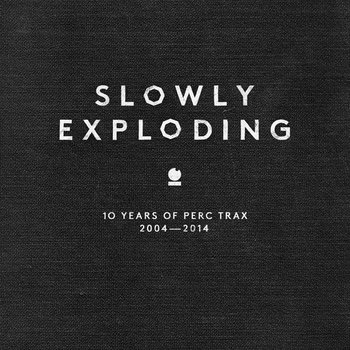
Read More
- Administrator
- Albums and Singles
Mysterious techno operative makes shock return with debut album Butterfly Effect.
Demdike Stare have released the debut album from Shinichi Atobe on their DDS label.
Atobe only has one previous record to his name: Ship-Scope, a dubby and emotive techno 12-inch that came out on the Basic Channel sublabel Chain Reaction in 2001 (that one remains highly sought-after online and was one of FACT's "25 Best Dub Techno Tracks of All Time"). He hasn't been heard from since, but some sleuthing by UK duo Demdike Stare has unearthed a full album's worth of new and archival material from the Japan-based producer.
The album is limited to 600 vinyl copies. The vinyl, CD editions, and digital version are out now.
(via Resident Advisor and FACT)

Read More
- Administrator
- Albums and Singles
Lawrence English and Stephen Vitiello are creators of mythology. Their mythology renders a series of acoustic spaces, haunted by narrative and hinting at happenings unseen, but certainly heard.
With Fable, we are presented with their second duet. It chronicles three years of intermittent audio communications in search of new collaborative approaches. The results focus on the pair's joint interests in modular synthesis, field recordings and the blurry boundaries between acoustic instrumentation and electronics. The album's multiplicity of sources creates a weaving and at times overwhelming collage of materials that coalesce with considered intent. Its palette, whilst diverse remains focused and as the album progresses themes of arrhythmic percussion, electronic-like field recording, prepared piano and vintage synthesis begin to take form.
Like the photography of the cover, these musical pieces bare witness to time, they exist in the moment, but are formed outside of a sense of singularity. Their textured qualities and intricate variations are evidence of an iterative production methodology that invites a depth of listening. A pondering and the intended goal that one may hear or even see their own internal spaces, haunted by a cast of sonic characters.
More information can be found here.

Read More
- Administrator
- Albums and Singles
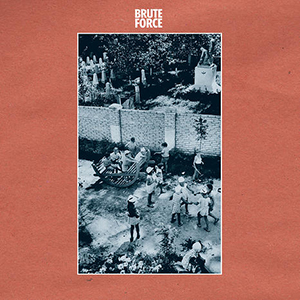 Every once in a while, a record comes along in which the title perfectly encapsulates the music contained within. As a bass/guitar/drum trio, this Norweigian group approaches their instruments with the intensity that noise artists do with their massive batteries of guitar pedals. While I can actually hear the instruments these guys are using, it is assembled so roughly that it might as well be a noise record, and a glorious one at that.
Every once in a while, a record comes along in which the title perfectly encapsulates the music contained within. As a bass/guitar/drum trio, this Norweigian group approaches their instruments with the intensity that noise artists do with their massive batteries of guitar pedals. While I can actually hear the instruments these guys are using, it is assembled so roughly that it might as well be a noise record, and a glorious one at that.
Brute Force seem to come from the European school of jazz that was pioneered by Peter Brotzmann, in which the traditional instruments of the genre are used, but played with a force and intensity that makes it stand apart.The only moments where this nearly 30 minute piece seems to relent is when the players may be trying to catch their breath. Beyond that, it is a continuous and sustained roar that was captured at a live performance.
The breakneck drums and percussion of Ole Mofjell keep the performance moving at a whiplash pace.Concussive, machine gun like tempos occasionally drift from traditional drumming into more improvised realms:I swear I heard keys jingling and metal banging but I could be wrong.Atop this bassist Egil Kalman and guitarist Karul Haugland Bjorå take turns battling it out, with both of them attacking their instruments with a ferocity that makes the sounds they are producing almost unidentifiable.
Occasionally what sounds like a clipped guitar note or bass vibration slips through, but for most of the piece they each end up in an intermingled roar of noise.It does not sound like this is due to any effects, processing or electronics though.The sound and feel is that all three are simply playing with such force and intensity that the sound comes out so mangled.
Due to the sheer volume and density of the performance, this is one of the more physically exhausting records I have heard in recent years.While it was a thrill and experience, once it was over I welcomed the silence and was in no hurry to listen to anything else.This is a heavy record, and the lack of melody or subtlety throughout only reinforces how brute force this truly is.
samples:
 
Read More
- Administrator
- Albums and Singles
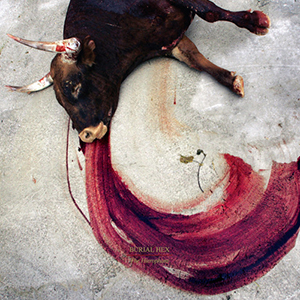 As the final full length release to be released by Clay Ruby under his Burial Hex moniker, The Hierophant is an appropriately dramatic tombstone for the enigmatic project. Esoteric shades of noise and blackened metal color the middle portions of the record, bookended by two gloriously perverse, almost pop songs that standout as both baffling and utterly compelling.
As the final full length release to be released by Clay Ruby under his Burial Hex moniker, The Hierophant is an appropriately dramatic tombstone for the enigmatic project. Esoteric shades of noise and blackened metal color the middle portions of the record, bookended by two gloriously perverse, almost pop songs that standout as both baffling and utterly compelling.
It is these lengthy opening and closing songs that really grabbed me most of all with this record."Winter Dawn" may begin with dramatic, flowery synths and electronics, but when the chiming electric guitar and deep, thudding drum machine appear early on, it becomes gripping and catchy.Once Ruby's vocals appear, the song begins to feel like a brilliant slice of post-punk synth pop, with shades of most of the artists of that era, but never really resembling anything but Burial Hex.
The 15 minute conclusion to the album, "The Most Foolish Son is Always the Oldest One," first has Ruby leading in with violin over cricket field recordings, a mood that is quickly shifted once the beat and synth sequence drop in.From there the song evolves into an oddly upbeat and poppy number with some slight neofolk and goth flourishes, and even a hint of psychedelia.With his voice channeling Nick Cave in a superlative manner, the piece builds to a sweeping conclusion that is a fitting climax for the album, and likely project as a whole.These two pieces feature Nathanial Ritter and Troy Schafer of Wisconsin contemporaries Kinit Her, with Schafer contributing the string and brass arrangements throughout the entire album.
The three pieces sandwiched between these two are in no way lacking, but work on a different, more experimental level."Final Love" has Ruby retaining the synthetic programmed rhythms from the preceding "Winter Dawn," but with guttural vocals and dark, metallic noises throughout.Clay lightens up a bit once strings and piano sounds appear in the song's latter half, but it never really lightens and instead stays foreboding throughout.
The title song, sitting as the centerpiece of the album, draws more from the dramatic and dissonant parts of the album more so than the song oriented moments.Again, growling demonic vocals appear amidst walls of electronics and dramatic expanses of violin, and never does a concession to pop music arise."Never Dying," on the other hand, embraces minimalism and subtlety.Over a bed of evening field recordings (the same ones that lead into "The Most Foolish Son…") he works in delicate piano and whispered vocals.It sticks to this structure for most of the piece, but with the understated nature the piece conveys a different style of intensity, one that seems ready to burst out maliciously at any moment.
I am not sure what Clay Ruby's post-Burial Hex plans may be as far as music goes, but based on the strength of the opening and ending pieces of this album, I sincerely hope he goes for something more traditionally oriented.While the more experimental and abstract moments of The Hierophant are excellent, it is on the other two that I caught myself especially captivated by that sound that manages to be both musical and non-musical at the same time.Memorable, yet unlike anyone else, they make for an intense shine on an already brilliant record, and one that closes Burial Hex's existence appropriately.
samples:
 
Read More
- Administrator
- Albums and Singles
Synapse-scorching occult-industrial-prog-noise-folk from the strings of Matthew Bower and Samantha Davies.
Churning mantras and drukpa elegies for two erased darkside tree limbs: that of the Draconian in Khem, and of Drax Priory in West Yorkshire, which together with Bhutan are the Dragon Lands. The twilight language of flowers is spoken and wolves are raised, finally, Kali dances. For fans of Bathory and Popul Vuh.
Comes in a deluxe 6-panel outsized double-digipak with a 16-page booklet.
More information is available here.
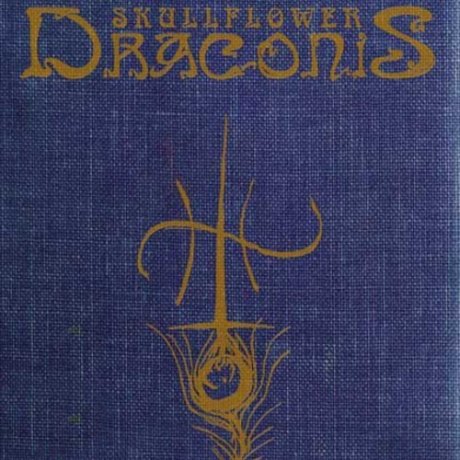
Read More
- Administrator
- Albums and Singles

"Ruins was made in Aljezur, Portugal in 2011 on a residency set up by Galeria Zé dos Bois. I recorded everything there except the last song, which I did at mother's house in 2004. I'm still surprised by what I wound up with. It was the first time I'd sat still for a few years; processed a lot of political anger and emotional garbage. Recorded pretty simply, with a portable 4-track, a Sony stereo mic and an upright piano. When I wasn't recording songs I was hiking several miles to the beach. The path wound through the ruins of several old estates and a small village.
The album is a document. A nod to that daily walk. Failed structures. Living in the remains of love. I left the songs the way they came (microwave beep from when power went out after a storm); I hope that the album bears some resemblance to the place that I was in."
More information is available here.
Read More

